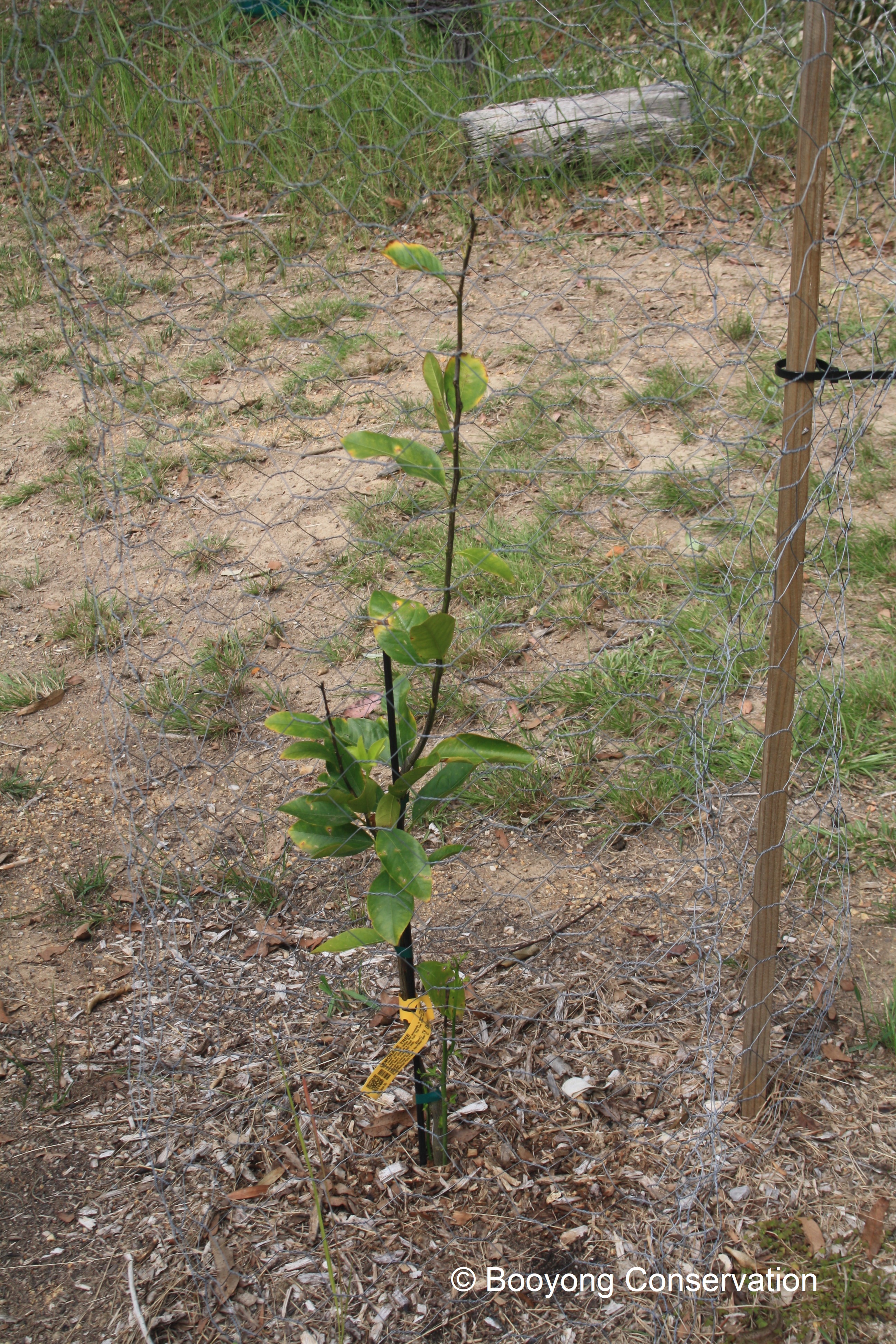Every Australian garden with children requires a lemonade tree. The lemonade tree is said to be a cross between a lemon tree and a mandarin tree. The fruit can be eaten straight from the tree which is wonderful. It was purchased from Daleys. It is evergreen, self-pollinating and prefers a temperate climate.
At Booyong we also have an established lemon tree that we are yet to identify. For the purpose of its care, we will assume it requires the same needs as our other citrus trees until it is appropriately identified.
Care – The lemonade tree will require moderate watering and we will expect fruit in 2-3 years’ time. It likes sun or shade, good drainage and a soil ph Neutral (6.6-7.3pH) and will be composted and mulched to assist in growth and tree development. Weeds will be kept from the base of the tree, and it will be fertilized with cow manure, citrus fertilizer and Blood and Bone in Spring and Autumn.
Pruning – We will prune it and keep it no higher than approximately 2 metres so we can access the fruit easily.
Companion Planting – Citrus trees, like a lot of fruit trees, fall prey to insects very easily. Marigolds, petunias and borage drives away bad insects. Nasturtium draws aphids to it and away from your citrus tree. Yarrow, dill, and fennel all attract lacewings and ladybugs, which feed on aphids. Lemon balm, parsley, and tansy attract tachinid fly and wasps, which kill harmful caterpillars.
Pests and Diseases – According to The Garden citrus pests and diseases to watch out for include aphids, mealy bugs, black spot, collar rot, leaf miner and iron deficiencies.
Harvest – The Lemonade tree bears several heavy crops each year in June, July, August, September and October. Lemonade fruit is ripe when it softens ever so slightly and comes easily off the tree. Grasp the fruit in your hand, and if it feels heavy and comes away with a gentle twist, it’s ripe!
Propagation – They propagate well from cuttings, although the resulting tree may lack the same disease resistance found in commercially grown lemonade trees, which are usually grafted. Lemonade tree seeds can be successfully propagated; however, the parent plant may be a hybrid, and this will result in a sterile tree that bears no fruit.
Propagation by layering has the advantage of providing larger, robust plants in less time than is possible with seeds or cuttings. To do so select a branch of new growth with a diameter of approximately ½ inch; remove a ring of bark from the branch ½ inch in width; apply rooting hormone to the wound; wrap moistened sphagnum moss around the treated area; cover the moss with plastic wrap; and then tape this bundle securely to retain the moisture, and roots will form. A friend at Seed savers showed us how to do this and it was quite successful.
Health Benefits – The lemon juice and its peel contains citric acid, phosphoric acid, malic acid and sucrose and have a variety of medicinal uses and health benefits. We will explore these more when we are blessed with fruit in a few years’ time.
Eating – This sweet juicy fruit tastes like lemonade, is devoid of bitterness and can easily be eaten as a fresh fruit. Apparently, they make the perfect marmalade with grapefruit and Seville oranges. They are also often added to Bacardi, whiskey and ginger beer, and of course are used to make lemonade and tea. They can be used in the preparation of salads, and to prevent the discoloration of sliced bananas and apples. Pickled and preserved lemons would be nice to try as well.
We will keep you posted as it develops, and we learn more.
